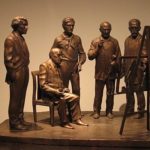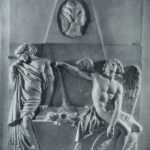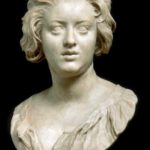Thomas Quellinus is a Flemish sculptor

Thomas Quellinus is a Flemish sculptor who became famous throughout Europe for creating skillful tombstones in the Baroque style.
Thomas Quellinus is a famous Flemish sculptor of the late 17th – early 18th centuries, a prominent representative of the Baroque style in the history of European art. He became famous for making luxurious chapels and tombstones. Among the best masterpieces of his work, one can also highlight a number of allegorical sculptures and church altars. Not a single original portrait of the master has survived to this day, and many facts from his biography still cause controversy among historians.
Thomas Quellinus belonged to the famous family of Flemish artists. Outstanding sculptors were his grandfather, uncle, father and older brother, and two other uncles became famous for their skillful production of engravings and painting.


Biography of Thomas Quellinus
Thomas Quellinus was born in Antwerp in the spring of 1661. Parents baptized their youngest son in the city cathedral on March 17. From early childhood, the boy helped his father in the workshop and by the age of 20 had learned to skillfully work with clay, plaster and marble.
Having mastered the basics of sculptural art, in the early 1680s, Thomas left for London to live with his older brother Artus, who had moved to England a little earlier. Together they worked in the studio on private commissions for several years, but then the brothers parted ways. Artus remained forever in England, and Thomas went to Copenhagen in 1689.

He was persuaded to move to the capital of Denmark by his aging father, who needed a manager for the local branch of the family workshop. 27-year-old Thomas promptly established the efficient operation of the enterprise and very soon achieved complete independence in all matters. He engaged in the manufacture of tombstones for the local nobility and by the end of the 17th century gained immense popularity not only in Denmark, but also in other countries of Northern Europe.
In order to develop the family business in the early 1690s, Thomas Quellinus opened another workshop in Lübeck on the Baltic coast of Germany and subsequently visited this city often. But most of the year the master lived in the capital of Denmark. In 1703 he was given the title of honorary citizen of Copenhagen.

The circle of interests of Quellinus was not limited only to the manufacture of sculptures.
He devoted much of his time to running the workshop and teaching young apprentices. Among his students, it is worth noting the names of: Jerome Jakob Hassenberg; Just Wiedevelt; Alexander van Papenhoven.
In 1701, Quellinus became one of the founders of the Society of Danish Artists, and two years later he received from the Danish king permission to trade throughout the country with the famous Brabant lace, which brought a substantial additional income to his family.
Almost no information has been preserved about the artist’s family life. It is known that he married in the 1680s in England Anna Maria Kokes, with whom he lived in marriage until the end of his days.

In 1700, the sculptor’s father died in Antwerp, and Thomas began to visit this city frequently on business. Finally, in 1707, he decided to leave Denmark forever and returned to his homeland. The famous master was immediately accepted into the local guild of St. Luke, but he did not have time to realize new creative plans. In September 1709, Thomas Quellinus died suddenly in Antwerp at the age of 48, where he was buried.
Thomas Quellinus was one of the most sought after and respected Flemish sculptors of his era. And the magnificent tombstones and sculptures created by the master still amaze art connoisseurs with exquisite beauty and harmony.












